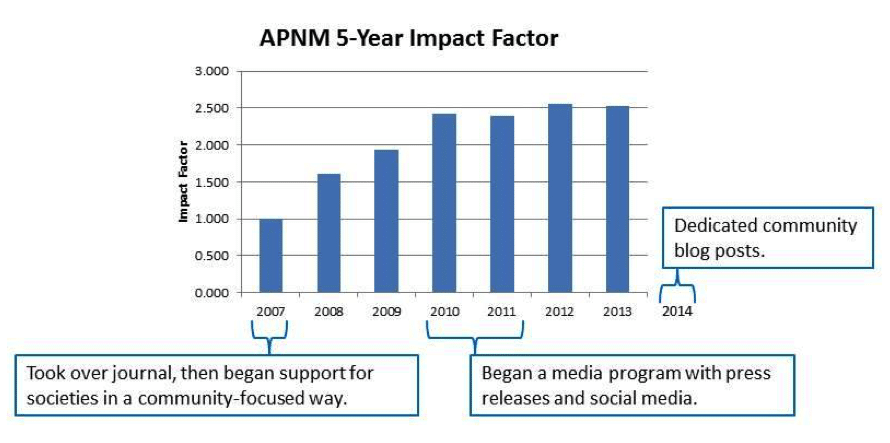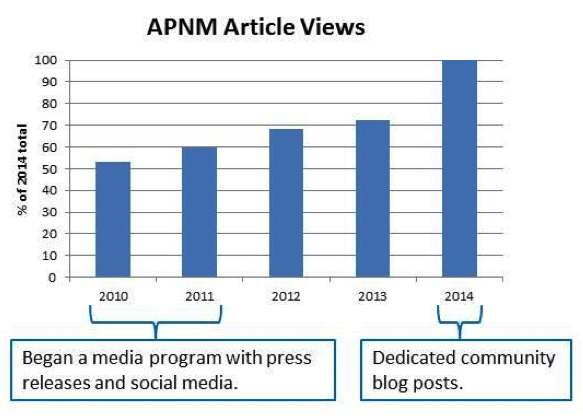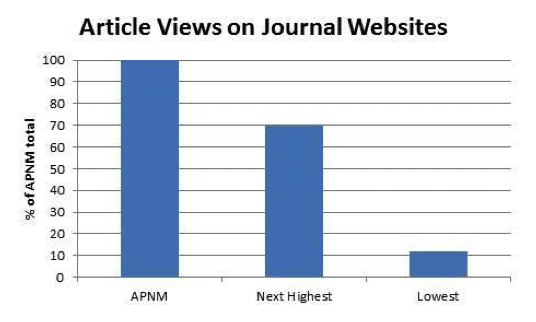Subscribe to our newsletter
Why SciComm? The Give and Take of Not-for-profit Scholarly Publishing
By Tanya Samman, Jenny Ryan and Michael Donaldson – Canadian Science Publishing
In a time where distrust of science and scientists is high and science literacy levels are low, science communication and outreach is of great importance. Many might consider that a scholarly publisher’s sole purpose is to provide a platform for scientists to communicate their peer-reviewed research to other scientists. Why, then, would a publisher get involved in public science communication and outreach to the broader community? Is it because it is the “right thing to do”, or because it is profitable? The truth lies somewhere in the middle, at least for Canadian Science Publishing (CSP).
Not-for-profit scholarly publishing
Many publishers (including societies, associations, etc.) are mission-driven rather than profit-driven. Not-for-profit publishers, such as CSP, are uniquely but precariously positioned. In a competitive scholarly publishing market, not-for-profit publishers have to strike a balance between the give (i.e., giving back to the community) and the take (i.e., generating revenue to maintain publishing operations).
We obviously need to support our publishing efforts and remain competitive through revenue-generating activities, such as subscription sales, open access fees, and publishing services. But our goals are less geared to the bottom line and more toward community support.
Why community focus?
A publisher can support the scholarly community in several ways, including provision of financial support, enhanced communication channels (e.g., multimedia and blogs), and training. Ultimately, stronger research communities produce better research, resulting in good papers for our journals, and increasing readership. Investing in the community builds our revenue, and in return those funds help us build the community.
As a nationally-based publisher, CSP’s values reflect those of the Canadian research community and of Canadian society in general. Although the research community is still heavily influenced by journal impact factors when determining where to publish, more people are starting to look beyond the impact factor for value added features in their publishing choices, such as integration of multimedia, social media support, premium author services, etc. Community support and engagement is integral to providing such value added services. In return, community engagement helps to build our company profile, fostering loyalty and trust, ultimately resulting in better submissions for our journals and therefore a higher quality product. In this way, science communication is not only integral to the missions of many publishers but is also good business.
How do we do it?
Not-for-profit publishers channel revenue back to the scholarly community. Society publishers generally support researchers in their field whereas at CSP, instead of focusing on a single discipline, our goal is to promote Canadian science and the activities of Canadian researchers and research institutions, both locally and globally. We allocate funds to sponsor conferences and symposia and help to organize associated special issues. Funds are also directed to provide awards, typically in the form of ‘best paper’, ‘career achievement’, and other merit-based awards. We often have common goals and typically partner with academic societies on these initiatives to offer long-term support, price-breaks on subscriptions and article processing charges, and assistance in publicizing society events and activities.
Does it work?
Let’s use our journal Applied Physiology, Nutrition, and Metabolism as an example. In the past 3 years this journal has seen tremendous growth. Firstly, it has increased publication rate from bimonthly to monthly. It is at the top of the “charts” according to Altmetric with a “score” that is 6 times that of our next most “popular” journal, and is competitive within its field. This journal sees significantly more social and media engagement – partly due to its general interest (Health and Fitness) subject matter, but also because of a highly engaged and influential Editor and loyal communities.
APNM has two affiliated societies (CNS and CSEP) with whom we exchange news, skills, advice, and dollars. We support their conferences, special projects, and student awards and they in turn endorse the journal and offer membership discounts for subscriptions. The journal recently supported the Ontario Exercise Physiology meeting through a sponsorship, an editor-hosted publishing and career workshop, and provided an opportunity for a number of students to try their hand at blogging to learn more about science communication and knowledge translation. This provides a platform for students to share their experiences and develop science communication skills, ultimately building loyalty for the journal. As a result, submissions have increased many-fold over the last 3 years and the Impact Factor has increased steadily…
In addition, article views on the journal website have increased over time,
and are currently much higher than those of our other journals.
These trends speak somewhat to the subject matter, and certainly Applied Physiology, Nutrition, and Metabolism is one our most popular journals, but we believe that this success is also driven by activities that engage the community through science communication activities and researcher support. Quality content, high-caliber papers, and an increasingly influential editorial board are all evidence that our hard work and investments pay us back in readership and submissions.
Win!
Investing in the future
Contributing to improving science literacy also serves to increase awareness about and foster enthusiasm for science in the next generation. This is both “the right thing to do” and potentially profitable in the long term; in the future some of these young people will be authors publishing in our journals.
By maintaining open communication channels, not just through peer-reviewed journals but also through accessible blogs and social media, scholarly publishers are able to act as a conduit between scientists and their stakeholders. This includes drawing attention to issues or scientific advances that may be of interest to the public, decision- and policy-makers, and even scientists from other fields.
Last, but definitely not least, science communication and outreach ties in quite nicely with the drive behind the Open Access movement. The push towards author-centric publishing and greater openness requires us to foster stronger relationships with both the scientific community and the public.
All not-for-profit companies face difficult decisions when it comes to balancing give and take, but we argue that –building capacity amongst scholarly communities is not only a duty, but it will help us remain both relevant and profitable into the future.
About the authors:
Canadian Science Publishing (CSP) is an independent, not-for-profit scholarly publisher, dedicated to serving the needs of academic communities both within Canada and internationally.
Jenny Ryan is the Communications Manager at CSP. Jenny works with authors and other members of the scientific community to increase public awareness of research by engaging media (traditionally and socially) in conversation. Jenny is the Team Manager of Science Borealis, writes and coordinates the CSP Blog, CSP’s social media output and most other journal communications. She is also a proud to be one of the founding members of the Science Borealis team. A graduate of Ryerson’s Publishing program, she also holds a B.A. from Carleton University and has 15+ years of experience in publishing, writing and communication.
Tanya Samman is the Open Access Journal Coordinator at CSP. In her current role, Tanya is responsible for the launch and coordination of a new multidisciplinary Open Access journal. Prior to joining CSP, Tanya’s research focused on paleontology and geology, with specific interests in palaeoecology and functional morphology and biomechanics. In addition to her research interests, Tanya is passionate about science education, outreach, and communication. Tanya holds a Ph.D. from the University of Calgary and an M.Sc. and B.Sc. from the University of Toronto.
Michael Donaldson is the Content Development Manager at CSP. He recently began his current position at CSP where he works with the Editorial Boards of the suite of National Research Council Research Press journals to raise the profile of the journals, help to secure influential content, and support the research community. Prior to joining CSP, Michael had spent a decade conducting ecological research and has been part of several NSERC-funded research projects. Michael holds a Ph.D. from U.B.C. and an M.Sc. and B.Sc. from Carleton University.






